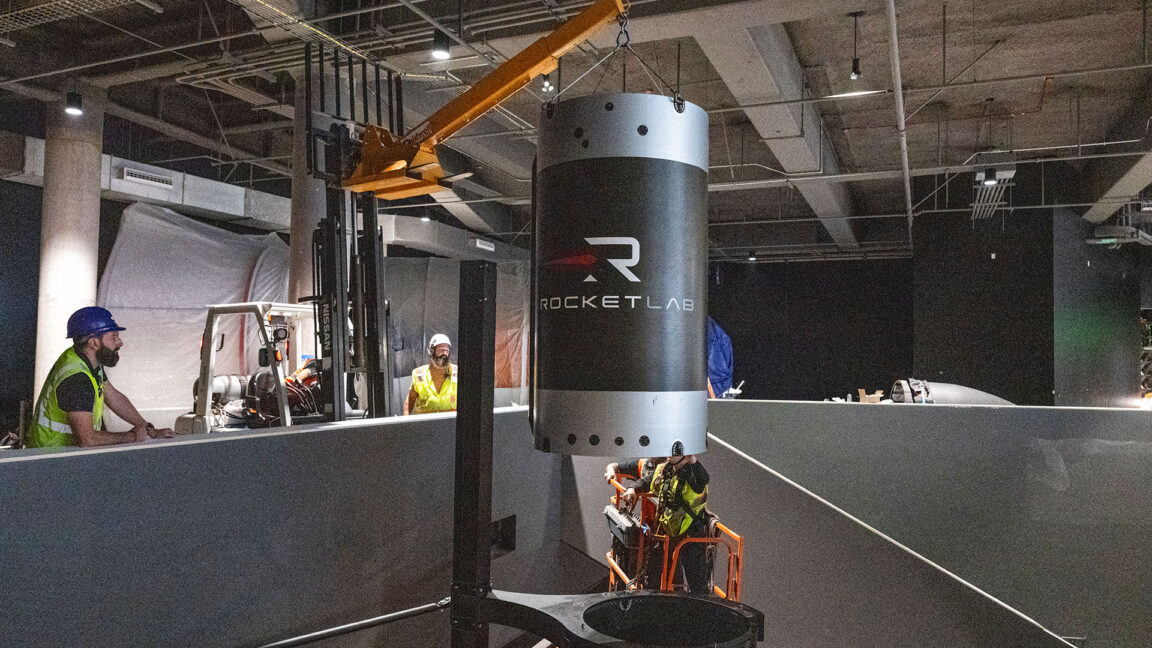
"We're really happy to show next-generation technologies from startup companies with new launch vehicles, particularly if the company is based in California. Our goal is to inspire and motivate the next generation, and we think that showing folks that there are still a lot of innovative things going on, happening in their backyard, is a really great opportunity to inspire kids and people of all ages."
"Now in place are a space shuttle main engine (SSME), a walk-through segment of a shuttle solid rocket booster, and a Rocket Lab Electron rocket. Founded in New Zealand in 2006 and now based in Long Beach, Rocket Lab developed the Electron as the first carbon-composite launch vehicle intended to service the small satellite market. It was also the first orbital-class rocket to use electric pump-fed engines."
The California Science Center completed more than three years of construction to erect the Samuel Oschin Air and Space Center and stack space shuttle Endeavour in a launch pad-like display. The center is now focused on completing artifact installation and installing exhibits, with most exhibits in fabrication and audio-visual production underway. The Kent Kresa Space Gallery will complement the Samuel Oschin Shuttle Gallery with areas devoted to Rocket Science, Robots in Space, and Humans in Space. Artifacts now installed include a space shuttle main engine, a walk-through solid rocket booster segment, and a Rocket Lab Electron rocket. Rocket Lab, founded in New Zealand in 2006 and now based in Long Beach, developed the Electron as a carbon-composite, electric pump-fed orbital-class launch vehicle for the small-satellite market. The center aims to showcase local innovation and inspire the next generation.
Read at Ars Technica
Unable to calculate read time
Collection
[
|
...
]